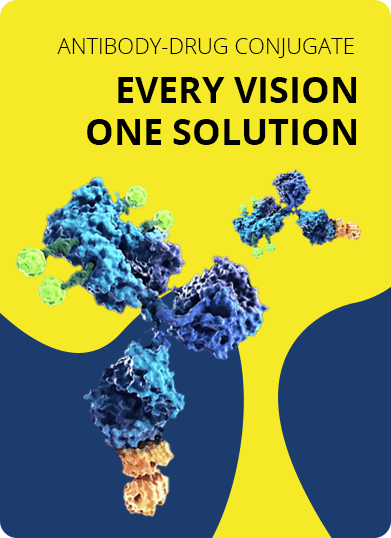- Home
- UTC Development
- Antibody-based Probe Development
- Antibody-Fluorophore Probe Development
Antibody-Fluorophore Probe Development Service
Fluorophores are a family of chemical compounds that can emit light upon the adsorption of energy from an excitation light source. For a certain fluorophore, there is a specific excitation and emission spectrum. Typically, the wavelengths of light that can cause the maximum excitation and be captured from the maximum emission (Excitation/Emission) are used to refer to a given fluorophore. Most fluorophores are small organic compounds with 20–100 atoms, but there are also exceptions with larger sizes, e.g., natural fluorescent proteins. Fluorophores can be used either alone, together with other fluorescent agents, or as the fluorescent tags in a conjugate, e.g., a fluorophore-labeled antibody. Fluorophores or fluorescent conjugates play important roles in biochemical and biomedical studies and applications. For example, fluorophores can be used as probes for the measurement and tracking of ions, including Ca2+, Mg2+, Zn2+, Hg2+ and Cd2+, as well as for the capture and visualization of small molecules like H2O2, NO and H2S. Fluorophores are also widely used as fluorescent labels for fluorescence microscopy and near-infrared spectroscopy. With the development of new technologies, certain fluorophores are exploited for live-cell imaging, single molecule tracking, and high-resolution imagery.
In real-time applications, the imaging equipment, especially those for high-resolution imagery, usually have some requirements on the intensity and stability of the detectable fluorescent signals. However, the small size of a single fluorophore limits its fluorescence intensity, and makes the control of the fluorophore difficult. Therefore, it is preferred to conjugate fluorophores with a larger substrate, e.g., proteins, nucleic acid or nanoparticles, to enhance their stability and range of applications. The larger entities can immobilize the fluorophores, and sometimes protect the fluorophores from permanent damage such as photo-bleaching. Besides, certain biomolecules, particularly antibodies, can direct fluorophores to a specific site, allowing them to be used as fluorescent probes for a given target. The large size of an antibody allows multiple fluorophores to be attached on a single antibody, which breaks the intensity limitation of a single fluorophore. The conjugation between fluorophores and antibodies can be achieved via specific interactions between functional groups on both components, e.g., amino-succinimide reaction, thiol-maleimide reaction, as well as click chemistry.
Another popular application of antibody-fluorophore conjugated probes is flow cytometry. Fluorophore labeled antibodies enable cell sorting techniques such as fluorescence-activated cell sorting (FACS) flow cytometry for the fast and efficient identification and collection of cells expressing the desired surface antigen. In the meantime, with the development of more advanced imaging flow cytometry platforms, antibody-fluorophore probes facilitate not only the sorting and quantification of surface antigen, but also provide the means for the acquisition of high resolution images of the cells bearing the antibody binding targets.
With over a decade’s experiences in bio-conjugation chemistry, high-resolution imagery, and with our comprehensive antibody library, Creative Biolabs takes the lead to provide customers with high performance custom antibody-fluorophore probes. At Creative Biolabs, there is a large variety of organic fluorophores covering a broad excitation spectrum from visible to near-infrared range, which can fulfill the demands of different purposes. Besides, with expertise in antibody development, Creative Biolabs provides customers with a broad range of antibodies for selection. We not only provide the generally used, FDA-approved antibodies, but also customize specific antibodies or antibody derivatives, e.g., bispecific antibodies, single chain antibody fragments, and single domain antibody fragments, for customers’ special demands. We are committed to become your one-stop-shop for specialized antibody-fluorophore probes. Share with us your ideas and we will make it a reality. Please contact us for more information and a detailed quote.
For Research Use Only. NOT FOR CLINICAL USE.

Online Inquiry
Welcome! For price inquiries, please feel free to contact us through the form on the left side. We will get back to you as soon as possible.
